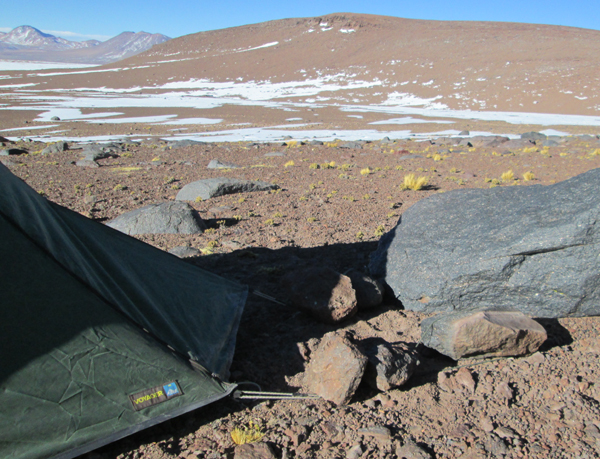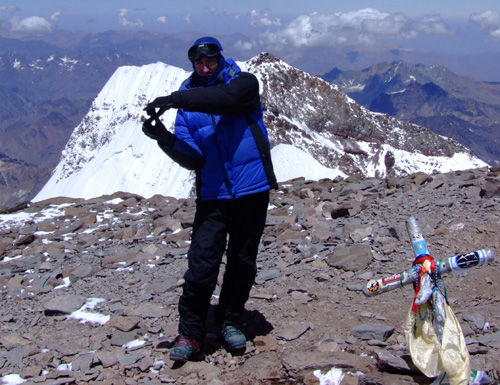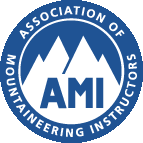Tips & Tricks for High Altitude
I have climbed over three hundred and twenty 5000m+ mountains, the majority of them in the Andes, and seen over 200 people acclimatising (or not) to these conditions. Despite this depth of experience I am still learning new ways of coping with the problems of high-altitude mountaineering and high-altitude camping. Here are some tips and tricks I have learned over the years. They'll hopefully save someone out there a bit of trial and error. I didn't really invent any of these tips and tricks myself, I'm just passing them on.
Warning Any new idea or technique, including all of those featured here, should be practised in a controlled and safe environment first, and tested in a variety of circumstances. High altitude is not the place to learn anything new, from ice-climbing to using a stove, to pitching tents in a strom. Mainly because the biggest effect of low oxygen uptake is that your brain does not work at all well. So learn and practice everything you can at home before you go to high altitude. Warning
These tips and tricks are in no particular order.
Camping at Altitude
It is important to remember that tents don't blow down in the wind... they blow up. Nearly always the problem is the wind getting in underneath the flysheet and/or ground sheet, so you should pitch your tent to prevent this happening.
Plan how you will pitch your tent before you leave home - on almost all high mountains tent pegs are completely useless and it is a waste of time and effort even carrying them. On many peaks making "rock-guys" to anchor your tent with locally available rocks is the best solution, but think about how you will tie and load these so that the tent is not then hit by the wind in an unusual way. A particular problem can be letting more wind get underneath the flysheet than is the case with pegs. It is wind getting in under a tent that is most likely to cause problems or failures. Every tent will be different. In soft snow use plastic bags or other snow anchors (see my regular tips & tricks page).

Rock guys made with 3mm or 4mm paracord (tied to the tent elastics) and used to pitch a Terra Nova Quasar in Chile. Note that it is very important to place the rocks in such a way that you keep the edge of the flysheet low to the ground, to prevent wind getting underneath the tent... Also place them so that the forces on the tent are not pulling zips apart sideways. .......but also DON'T put rocks directly against the tent fabric or the poles, because this will lead to very rapid wear and tear!
If you'll be camping on snow take a wooden board, to put your stove on, otherwise your stove will just melt itself into a big hole in the snow. I make wee boards from plywood or similar, these are pretty lightweight and naturally disposable. Metal obviously doesn't work too well... although some of the specially designed metal ones are OK.

My 8th time on the summit of Aconcagua, out of six expeditions.
Yourself at Altitude
Looking after yourself is the most important thing you can do. All the obvious stuff about acclimatising slowly, ascending slowly, taking rest days etc, is well covered elsewhere, but read it and do it.!
Your Performance - There is an enormous difference in how well people go at altitude, and most of this seems to be something you are born with, genetics or blood chemistry or something. Some perfectly fit people will just never do well at altitude. If you are one of these people then give up after one or two trips and go and do something else instead. Others, like myself, with no great claim to fitness, do very well every time we go to altitude.
Fitness While fit people certainly get altitude illness and can acclimatise poorly, I've never seen anyone unfit doing well at 6000m.! Get fit before you leave home then once at altitude go slowly. "Underexercise". Try not to get sucked into any macho bullshit or races.
Water - Drink as much as you can. I certainly don't advocate sipping litres of cold and unappetising water though. I much prefer my water with some heat, tea, milk and sugar in it. See below for the "tea is a diuretic" fallacy. Guzzling a litre of tea will re-hydrate you much more quickly and much more effectively than sipping small amounts of cold water.
Caffeine - I'm all for this, within reason. Caffeine has been banned by the IOC because it is a performance enhancing drug. From what I have read it is particularly effective as a "performance enhancer" for endurance events, which high altitude climbing certainly is. There is a lot of nonsense talked about caffeine being a diuretic. In theory it is, but that doesn't mean that a litre of tea will de-hydrate you. While a thick espresso coffee might be a problem at altitude, if you drink a litre of tea you will retain 90 or 95% of that fluid. So most people will re-hydrate more quickly and much more effectively drinking two litres of nice warm sweet tea, than forcing down small amounts of cold water.
Diamox - I'm generally against using Diamox at altitude. People who know high-altitude very well, such as the base camp doctors on Aconcagua, don't think it is a good idea. There are several reason for this. There is a worry that it may hide some of the symptoms of the oedemas. So rather than preventing them it may just disguise them until it is too late for action. It is also a powerful diuretic, so unless you drink large amounts of fluid you may become de-hydrated, with the obvious increased risk of frostbite, etc. So my advice would be to take your time, drink plenty and don't muck about with quite powerful drugs in remote places.!


